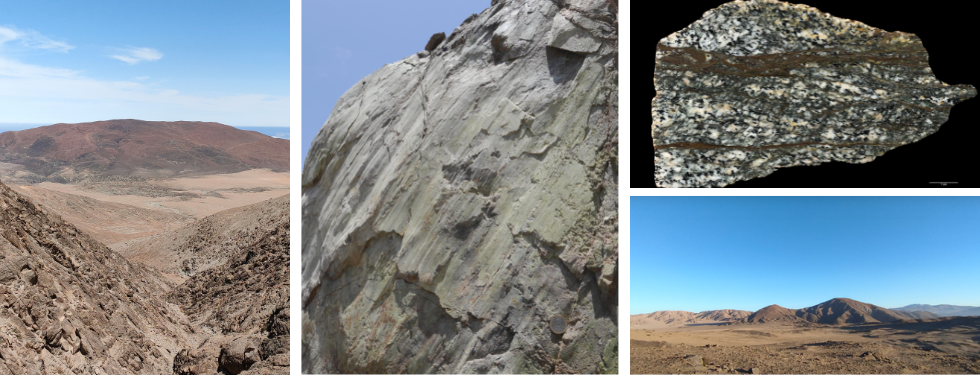A new study describes the architecture of the Bolfin Fault in the Atacama Desert (Chile)

Detailed imaging of the architecture of fault zones and in turn their internal structure is pivotal to improve our comprehension of seismogenic processes. Nevertheless, faults are not often well exposed at the surface because faults are covered by vegetation or deposits. Another issue is that, in several areas in the world, Italy included, the exposed sections of the faults are too shallow. As a result, they do not represent the deeper sections, where earthquakes nucleate.
As a consequence, the Department of Geosciences of the Università degli Studi di Padova has been conducting scientific expeditions in the Atacama Desert (Chile) for many years. In the desert, the absence of vegetation allows the researchers to observe faults exposed at the surface, which were capable to generate earthquakes, up to 6.5-7.0 in magnitude, about 120 millions of years ago.
A new study, recently published in Journal of Structural Geology, describes the architecture of the Bolfin Fault and how the fault internal structure varies over tens of kilometers of exposure. The results presented and discussed in the paper allow us to improve our comprehension of fluid-rock interaction at seismogenic depths and the processes related to a particular type of seismic sequences, the seismic swarms.
“We know that these faults were seismogenic because we found pseudotachylytes, rocks that melt during an earthquake due to the stresses acting on the fault plane and then resolidify”, says Simone Masoch, PhD student at the Department of Geosciences and first author of this study.
“We found also vein networks which, based on several field and microstructural observations and by comparing them with currently active faults, allowed us to get insights on a particular type of seismicity, seismic swarms, which are sequences different from the mainshock-aftershock ones. Indeed, seismic swarms are typical of volcanic and hydrothermal settings, where earthquakes have a magnitude of 3-4, but they last for a long period of time, which can vary from a few weeks to a few months”.
The intense fluid-rock interaction affecting all the structural elements of the Bolfin Fault Zone attests a conspicuous percolation of hydrothermal fluids during the ancient seismic activity of the area.
“We discovered that these seismic sequences were triggered by the ingression of fluids within the fault zone. This can have practical implications because these faults are exhumed analogues of what happens during fluids injection at depth related to geothermal purposes or CO2 storage, for instance. Thus, this is relevant for us since from the study of these fault rocks we can understand what can happen during mining and industrial activities”, concludes Simone Masoch.
This work was conducted also by Prof. Giulio Di Toro, Prof. Giorgio Pennacchioni, Dr. Rodrigo Gomila and Dr. Michele Fondriest of the Department of Geosciences – Università degli Studi di Padova, in collaboration with Dr. Erik Jensen (National Research Center for Integrated Natural Disaster Management - Santiago, Cile), Prof. Thomas Mitchell (Department of Earth Sciences, University College London - London, United Kingdom) and Prof. José Cembrano (Departamento de Ingeniería Estructural y Geotécnica, Pontificia Universidad Católica de Chile - Santiago, Chile).





